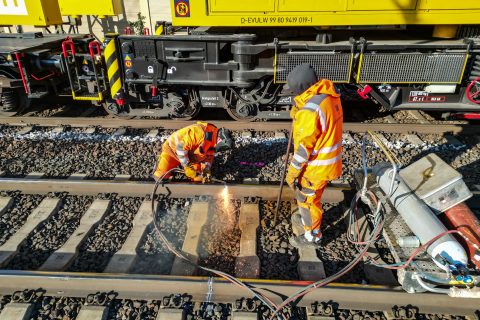No new railway project was commissioned in 2023 in Germany

The plan announced by the current ruling class in Germany, the so-called traffic light coalition, to expand rail capacity did bring the expected results for 2023. German rail association Die Güterbahnen said that “no new construction, no expansion, no route reactivation and not even a new overhead line will be put into operation throughout Germany” this year.
This, according to the association, is a sign that the German government might be prioritising road projects over rail ones. As they highlighted, ”the road network has grown and continues to grow by 10,000 kilometers every year”. The story is drastically different when it comes to rail infrastructure. Over the past six years, an average of 23.2 kilometres of railways were built annually.
However, these results are somewhat skewed, as most of the work was carried out in 2018 and 2022, as the graph below shows. It needs to be mentioned that, despite shallow figures for 2019, 2020, and 2021, some progress was made, whereas for 2023 there was none whatsoever. Moreover, significant disruptions occurred during those three years, including the COVID-19 pandemic.

‘General renovation projects will compete with ones for new infrastructures’
According to Die Güterbahnen, talks concerning rail enhancement in Germany focus mostly on renovating existing routes and expanding the network by 750 kilometres (1,2 per cent of the total) by 2030. “Especially in the run-up to the announced general renovation of 40 sections, it would be important to create additional capacity by expanding routes”, the association pointed out. For example, many industry players in Germany are asking for the construction of an alternative Middle Rhine Railway, but current expectations do not overflow with optimism.
Moreover, the association is lamenting the lack of clarity when it comes to the 45 billion euros that should be invested in rail projects up to 2027. “It is still unclear how much should go to new construction, expansion, and electrification”, Die Güterbahnen mentioned. One of the main issues is that this approach seems to create competition between rail infrastructure renovation and new construction projects. “New construction and expansion must be given the same priority and the money must be made available over the year in an infrastructure fund based on the Swiss model”, concluded Peter Westenberger, Managing Director of Die Güterbahnen.
Also read:
- Frankfurt-Mannheim railway: total closure between 1 and 22 January
- Germany extends use of long trucks: what are the risks for rail?
- DB Cargo on track for layoffs, ‘it has already started,’ say employees
- Germany: ‘New budget doesn’t reflect changes in the government’s thinking’
You just read one of our premium articles free of charge
Want full access? Take advantage of our exclusive offer





